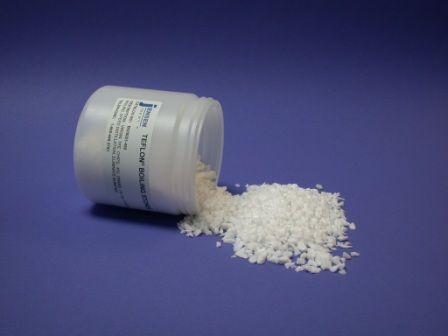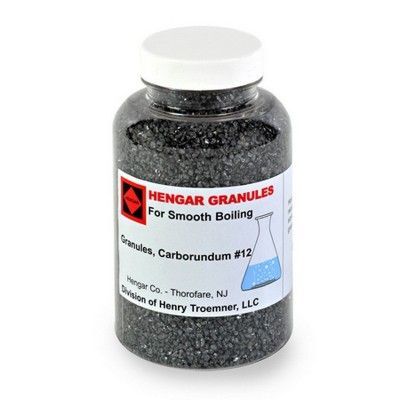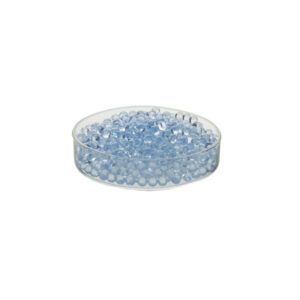Boiling stones, also known as superheated stones, are a type of small, heated stone that is used to heat liquids in a laboratory setting. While boiling stones have many benefits, they also have a few potential drawbacks.


Advantages of boiling stones
Boiling stones have a few advantages over other methods of heating liquids.
Chemistry boiling stones are a more efficient way to heat liquids than using a Bunsen burner. This is because the heat from the stone is directly transferred to the liquid, without being lost to the surroundings.
Another advantage of boiling stones is that they can be used to heat multiple liquids at the same time. This is because the stones can be placed in multiple beakers or flasks, and the heat will be evenly distributed to each one.
In addition, chemistry boiling stones can be reused multiple times. This means that they are a more sustainable option than other methods of heating liquids, such as using a Bunsen burner.
Drawbacks of chemistry boiling stone
There are a few potential drawbacks to using boiling stones.
One drawback is that boiling stones can be a hazard if they are not used correctly. This is because the stones can get very hot, and they can cause burns if they come into contact with skin.
Another potential drawback is that boiling stones can break glassware if they are not used correctly. This is because the stones can become lodged in the glass and break it.
Finally, boiling stones can be difficult to clean. This is because the stones can become covered in residue from the liquids they are used to heat.
Despite these potential drawbacks, boiling stones are a safe and effective way to heat liquids in a laboratory setting.
Boiling granules


Boiling granules are small pellets that are used to heat liquids in a laboratory setting.
These granules are made of a material that has a very high melting point, so they can be used to heat liquids to high temperatures without fear of the granules melting.
The high melting point of the granules also makes them ideal for use in applications where the liquid being heated needs to be kept at a constant temperature for a long period of time.
The granules are also very stable and do not break down over time like some other heating elements.
There are a few different types of laboratory boiling granules available on the market, but the most common type is made from alumina.
Alumina is a material that is derived from aluminum oxide, and it has a very high melting point.
This type of granule is often used in applications where the liquid being heated needs to be kept at a constant temperature for a long period of time.
The granules are also very stable and do not break down over time like some other heating elements.
Laboratory boiling granules are small pellets that are used to heat liquids in a laboratory setting. These granules are made of a material that has a very high melting point, so they can be used to heat liquids to high temperatures without fear of the granules melting. The high melting point of the granules also makes them ideal for use in applications where the liquid being heated needs to be kept at a constant temperature for a long period of time. The granules are also very stable and do not break down over time like some other heating elements.
There are a few different types of laboratory boiling granules available on the market, but the most common type is made from alumina. Alumina is a material that is derived from aluminum oxide, and it has a very high melting point. This type of granule is often used in applications where the liquid being heated needs to be kept at a constant temperature for a long period of time. The granules are also very stable and do not break down over time like some other heating elements.
Alumina is the most common type of laboratory boiling granule, but there are other types available as well. One type of granule is made from zirconia, which is another material derived from aluminum oxide. Zirconia has an even higher melting point than alumina, making it ideal for even higher temperatures. However, zirconia granules are more expensive than alumina granules. Another type of granule is made from hafnium oxide, which has an even higher melting point than zirconia. Hafnium oxide granules are the most expensive type of granule, but they can withstand the highest temperatures.
No matter what type of granule you choose, you can be sure that it will last a long time. Laboratory boiling granules are designed for long-term use and will not break down over time like some other heating elements. When used properly, they will provide years of service and can be a great way to keep your liquids at a constant temperature.
Boiling beads


Boiling beads are typically made from borosilicate glass, which is a type of glass that is resistant to thermal shock. This means that the glass will not shatter if it is exposed to sudden changes in temperature, such as when boiling water is poured into a container.
The size of the boiling bead will vary depending on the size of the container that it is being used with. For example, a boiling bead for a small test tube will be much smaller than a boiling bead for a large beaker.
Boiling beads are placed into the container before the liquid is added. The container is then placed on a hot plate or Bunsen burner and the liquid is brought to a boil.
It is important to use the correct size boiling bead for the container being used. If the boiling bead is too small, it may not provide enough support and the container could tip over. If the boiling bead is too large, it could block the path of the liquid and prevent it from boiling evenly.
When the liquid has reached a boil, the container can be removed from the heat source and the boiling bead will help to evenly distribute the heat and prevent the liquid from boiling over.
Boiling beads are a necessary tool for any laboratory that frequently uses boiling liquids. They are inexpensive and easy to use, and they can help to prevent accidents and ensure that liquids are heated evenly.
